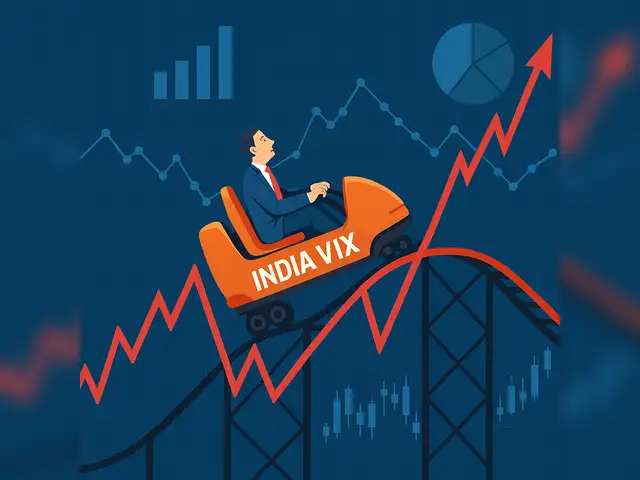Investors are the worst affected when sharp fluctuations occur in the markets; therefore, understanding market indicators becomes really crucial during these times. One such indicator is the India Volatility Index, or India VIX, which behaves as a meter to gauge market sentiment. It reflects the expected volatility of the Nifty 50 index for the near term and thus presents opportunities for strategic decision-making.
Understanding India VIX
The India VIX Means represents a measure fabricated from the Nifty options’ price. It expresses the market’s expectation of volatility over the next 30 days. When India VIX rises, it indicates an increase in expected market fluctuations. A lower VIX number suggests that the possible market conditions are calm. Compared with Nifty, which tracks movements in the market, India VIX anticipates what shifts can occur, which is why it works as a leading indicator.
The Connection Between India VIX and Nifty
The India VIX usually has an inverse relationship with Nifty. When Nifty falls abruptly, then India VIX rises, indicating heightened fear in the markets. But this rise does not mean anything for the longer trends; it rather reflects a short-term turbulence. Traders and investors could use this trend to watch for entering and exiting opportunities in the market.
Opportunities in Volatile Markets
Market panic can generate opportunities for those who smartly interpret India VIX. The higher the VIX extends, the more the traders demand premium for Nifty options due to expected swings. Such scenarios may tempt the implementation of some kind of selling options strategy through which investors may cash in on the inflated premiums. Conversely, in periods of low VIX, option premiums fall, thus making the cost of acquiring protective options also lower.
India VIX is also an indicator for swing trade opportunities. Whenever a spike is viewed alongside a sharp correction in Nifty 200, such temporary extremes in the market can pose entry points for short-term trades. Such trades will require careful observation of market conditions and the implementation of risk management strategies that will help to mitigate the volatility without excessively exposing capital.
Hedging with India VIX
Hedging is extremely important under turbulence in the market. Investors holding large positions in Nifty might use derivatives or options to shield their portfolios. India VIX could provide insight into possible market swings, thus aiding in determining when hedging can become necessary. For instance, if VIX reports trading above its usual range, the chances of having swings in the market get bigger, thus alerting investors that protective measures should be considered.
Insights about Behavior via India VIX
India VIX also depicts market psychology. The rise in VIX denotes escalation in fear, while its decline bets on the confidence or mere complacency of traders. Keeping track of these courses can provide insight into the sentiment of investors. Price reactions during times of panic are often irrational and exaggerated, providing plentiful opportunities for rationally-minded investors.
Understanding the behavioral aspects helps with deciding tactical strategies. Traders can use this signal for overreaction to sudden spikes in VIX, which coincide with heavy declines in Nifty for potential reversals or consolidation phases where they could be joining markets in a more calculated way.
An Indispensable India VIX in Risk Management
India VIX assesses market volatility in risk; this clearly spells the risks that are being assessed. Thus, depending on VIX values, it can determine adjustments to position size, levels at which to make stops, and a derivative strategy. The pathway in VIX analysis counters risk within a certain frame during a certain kind of downturn in general. Hence, it could also correlate with income-producing professional activity.
Keep in mind that India VIX signals underlying opportunities, while it does not state the exact direction of Nifty movements. A good implementation involves complementing VIX considerations with additional market indicators, technical indications, and fundamental research.
Strategic Takeaways
Some practical considerations for investors utilizing India VIX:
Option Strategies: VIX is very high, which makes it good to sell options because of high premiums, and when it is low, then hedging becomes cheaper.
Timing Trades: The spikes in VIX generally fit in one way or another with corrections in Nifty, creating tactical entry points for short-term trades.
Hedging Decisions: Watching VIX should enhance the quality of hedging initiatives to protect portfolios from sudden market swings.
Sentiment: Either rising VIX or waning VIX tells a lot about market psychology and assists with preparing for reverses or consolidation.
Risk Management: A good way of managing volatility-related risk is by adjusting portfolio exposure and derivative strategies according to VIX.
Conclusion
Simply put, India VIX is an efficient way of monitoring during market panic. It shows the volatility expected on Nifty, leading investors to view any volatility as turbulence in the decision-making process. Understanding its connection with Nifty and market sentiment opens avenues for tactical trades, hedges, and risk management.
